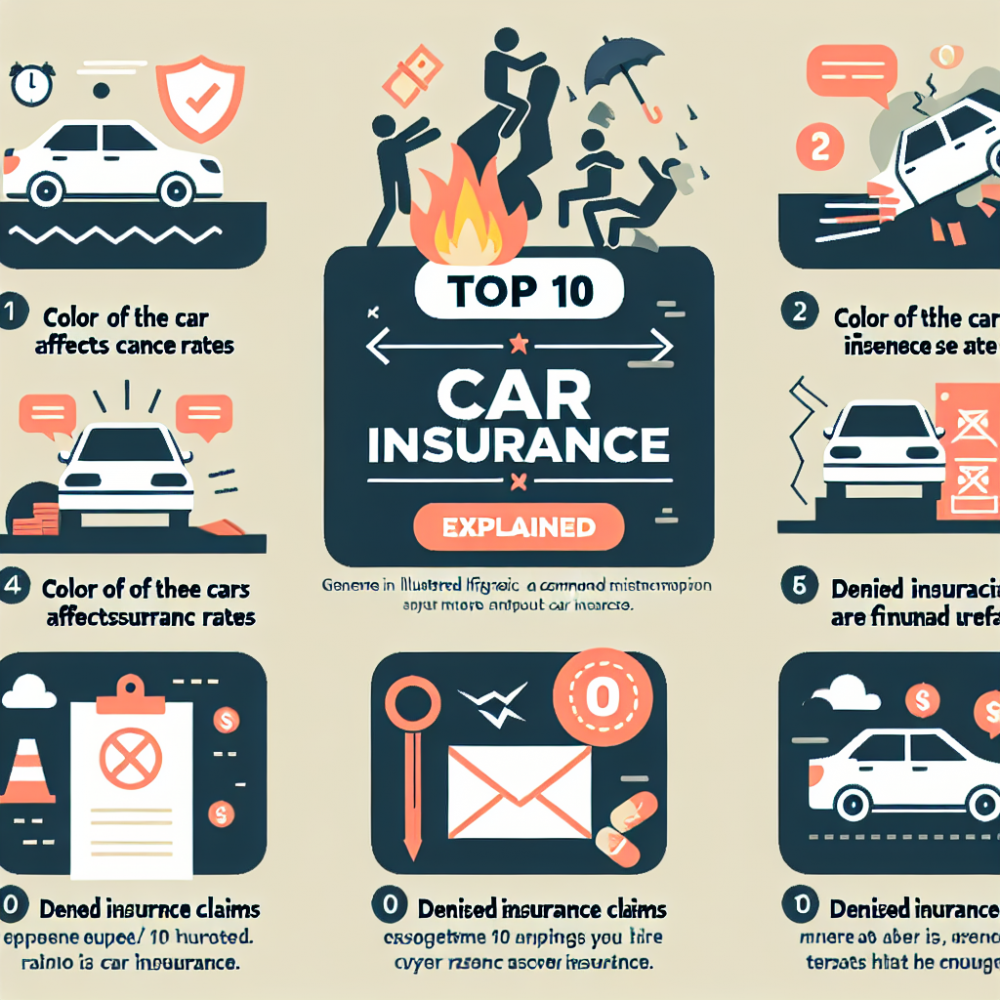Top 10 Car Insurance Myths Explained

Posted on: Saturday, March 2nd, 2024
When it comes to car insurance, misinformation can lead to costly mistakes. Many drivers hold beliefs about car insurance that are simply untrue, affecting their decision-making and policy choices. Understanding the truth behind common myths is crucial for making informed decisions about your car insurance coverage. Our guide aims to debunk these myths, ensuring you navigate your insurance needs with accurate information.
1. Red Cars Cost More to Insure
This is a widespread belief, but the color of your car doesn't affect your insurance rates. Insurers are more interested in the make, model, year, body type, engine size, the car's age, and the driver's history, not the color. Red cars might be popular and noticeable, but they do not inherently cost more to insure.
2. Older Drivers Pay More
While teenagers and young adults often face higher premiums, reaching a certain age doesn't necessarily mean your rates will skyrocket. Many insurers offer discounts to drivers between the ages of 55 and 70 for their experience and tendency to drive more cautiously. However, rates can increase for drivers past 70 due to the increased risk of accidents associated with aging.
3. Comprehensive Coverage Covers Everything
The name can be misleading. Comprehensive coverage does not protect against all possible incidents. It covers damage to your car that occurs due to non-collision events, like theft, vandalism, or natural disasters. It does not cover damage to your vehicle from a collision or mechanical failures.
4. Your Credit Score Doesn't Affect Your Insurance Rate
In most states, your credit score can indeed influence your car insurance rates. Insurers have found a correlation between a person's credit score and their likelihood of filing a claim. Therefore, maintaining a good credit score can help you secure lower insurance premiums.
5. Personal Auto Insurance Covers Business Use
Personal auto insurance policies are not designed to cover vehicles used for business purposes. If you use your car for delivering goods or transporting passengers for a fee, you might need a commercial auto insurance policy to be properly covered.
6. Full Coverage Equals Total Protection
There's no standard definition for "full coverage" in the insurance world. It often refers to a combination of liability, collision, and comprehensive insurance. However, it might not cover every scenario, such as personal injuries or uninsured motorists. Make sure you understand what your policy encompasses.
7. Insurance Rates Automatically Increase After a Claim
Filing a claim does not guarantee an increase in your insurance premiums. Insurers consider the severity of the accident, your role in it, your driving history, and even the frequency of claims in your area. In some cases, you might not see an increase at all, especially if it's your first claim or if it's minor.
8. Smaller Cars Are Cheaper to Insure
Smaller vehicles are often perceived as less expensive to insure. However, some small cars can be costly due to higher injury rates in accidents or expensive repairs. Safety ratings, repair costs, and theft rates affect insurance quotes more than the size of the vehicle.
9. You Only Need the Minimum Amount of Liability Coverage
While carrying the minimum amount of liability coverage required by your state is legal, it might not be enough to fully protect you from financial losses after an accident. Medical bills and repair costs can exceed these limits quickly. It's often recommended to purchase more than the minimum to have adequate protection.
10. All Insurance Companies Offer the Same Rates
Insurance companies use different formulas to calculate rates, meaning prices can vary significantly from one insurer to another. Factors like location, driving history, and vehicle type are considered differently. It's essential to shop around and compare quotes to find the best rate for your circumstances.